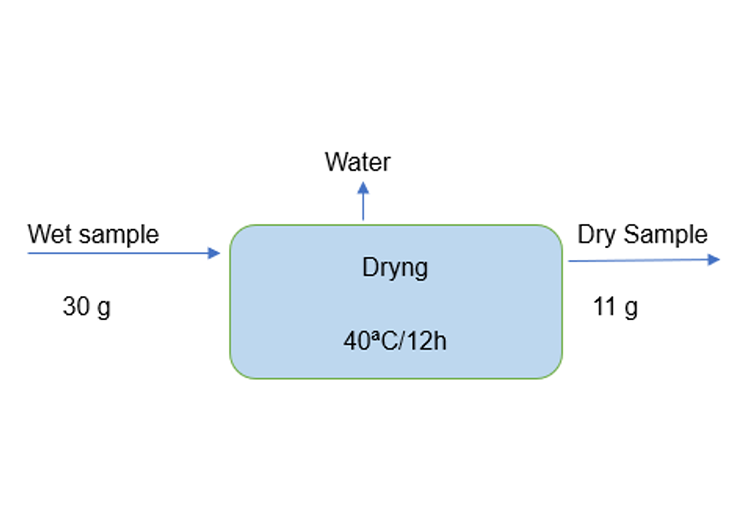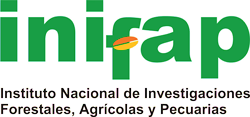Antioxidant activity and composition of Clinopodium tomentosum in wet and dry extraction
DOI:
https://doi.org/10.29312/remexca.v16i3.3630Keywords:
active principle, bioactive, extracts, phytochemicalsAbstract
In ancient times, various plant species were used in traditional medicine due to their properties, being utilized in diverse processes, both in the food and pharmaceutical sectors. The purpose of this study was to characterize the bioactive components, specifically antioxidants and polyphenols, present in Clinopodium tomentosum in both dry and wet samples. An ultrasound-assisted extraction method was implemented to obtain the active compounds. Subsequently, the identification and quantification of the extracted compounds were performed using the FRAP (Ferric Reducing Antioxidant Power) and Folin-Ciocalteu assays. As a result of this process, it was observed that extraction from dry matter yields higher concentrations, with 1.49 mg L-1 of polyphenols and 1.27 mg L-1 of antioxidants, compared to wet extraction, which yielded concentrations of 1.39 mg L-1 of polyphenols and 1.04 mg L-1 of antioxidants. The characterization of Clinopodium tomentosum enabled the identification of its bioactive components, paving the way for future research on the identification of its phytochemical components and their potential application in both food and non-food industries.
Downloads
References
Antolovich, M. A. and Crozier, A. M. 2000. Sample preparation in the analysis of antioxidants. Analyst. 125(5):989-1009. Doi.org/10.1039/b006426j.
Benzo, M.; Gilardoni, G.; Gandini, C.; Caccialanza, G.; Finzi, P. V.; Vidari, G. and Layedra, P. 2007. Determination of the threshold odor concentration of main odorants in essential oils using gas chromatography olfactometry incremental dilution technique. Journal of Chromatography A. 1150(1-2):131-135. Doi.org/10.1016/j.chroma.2006.11.008.
Boots, A. W.; Haenen, G. R. and Bast, A. B. 2008. Health effects of quercetin: from antioxidant to nutraceutical. European Journal of Pharmacology. 585(2-3):325-337. Doi.org/10.1016/j.ejphar.2008.03.008.
Drew, B. T. and Sytsma, K. J. 2012. Phylogenetics, biogeography and staminal evolution in the tribe Mentheae (Lamiaceae). American Journal of Botany. 99(5):933-953.
Duthie, S. J.; Ma, A. B.; Ross, M. A. and Collins, A. R. 1996. Antioxidant supplementation decreases oxidative DNA damage in human lymphocytes. Cancer Research. 56(6):1291-1295.
Ebert, A. W. and Engels, J. M. 2020. Plant biodiversity and genetic resources matter! Plants. 9(12):1706.04-06.
Enríquez-Estrella, M. 2021. Evaluation of the antioxidant capacity and phenolic content of the essential oil of dry and wet leaves of guaviduca (Piper carpunya Ruiz & Pav.). Semiárida. 31(1):09-15. Doi.org/10.19137/semiarida.2021(01).09-15.
Enriquez-Estrella, M. A.; Arboleda, L. F.; Salous, A. K. and Torres, S. H. 2023. Biological activity of lemongrass (Cymbopogon citratus) and its applications in the industry. Journal of Science and Technology. 40(1):90-97. Doi.org/10.36995/j.recyt.2023.40.010.
Estrella, J. 2015. Biodiversity and genetic resources: a guide for their use and access in Ecuador, Quito. EcoCiencia.
Fitzgerald, M. D.; Heinrich, M. A. and Booker, A. E. 2020. Medicinal plant analysis: A historical and regional discussion of emergent complex techniques. Frontiers in Pharmacology. 10(1):3-5.
Gachet, M. S.; Lecaro, J. S.; Kaiser, M. R.; Brun, R. A.; Navarrete, H. A.; Munoz, R. A. and Schühly, W. A. 2010. Assessment of anti-protozoal activity of plants traditionally used in Ecuador in the treatment of leishmaniasis. Journal of Ethnopharmacology. 128(1):184-197.
González-Rodríguez, R. and Cardentey-García, J. 2016. Knowledge about natural and traditional medicine by residents of general integral medicine. Revista Medicina Electrónica. 38(5):689-696. http://scielo.sld.cu/scielo.php?script=sci-arttext&pid=S168418242016000500004&lng=en.
Jarić, S.; Kostić, O.; Mataruga, Z.; Pavlović, D.; Pavlović, M.; Mitrović, M. and Pavle, P. 2018. Science Direct. Retrieved from https://www.sciencedirect.com/science/article/abs/pii/S0378874117321852#preview-section-introduction.
Justicia, R. M. 2007. Ecuador's chocó andean corridor: a landscape approach for conservation and sustainable development (University of Georgia). http://getd.libs.uga.edu/pdfs/justicia-rebeca-m-200712-phd.pdf.
McGaw, L. J.; Jäger, A. C.; Grace, O. O.; Fennel, C. A. and Staden, J. V. 2005. Medicinal plants. In ethics in agricultura an African perspective. Dordrecht. Springer Netherlands. 67-83 pp.
Naczk, M. and Shahidi, F. 2006. Phenolics in cereals, fruits, and vegetables: Occurrence, extraction, and analysis. Journal of Pharmaceutical and Biomedical Analysis. 41(5):1523-1542.
Pulsan, A.; García-Collado, M.; Fernández-Ortega, M. and Torres-Quiala, M. 2015. Phytotherapy and apitherapy in the work of José Martí. Revista Información Científica. 92(4):945-955. http://www.revinfcientifica.sld.cu/index.php/ric/article/view/212/1384.
Saltos, M. B. V.; Puente, B. F. N.; Malafronte, N. A. and Braca, A. B. 2014. Phenolic compounds from Clinopodium tomentosum (Kunth) Govaerts (Lamiaceae). Journal of the Brazilian Chemical Society. 25(11):2121-2124.
Teng, H. K.; Ghafoor, K. H. and Choi, Y. H. 2009. Optimization of microwave assisted extraction of active components from Chinese quince using response surface methodology. Journal of the Korean Society for Applied Biological Chemistry. 52(1):694-701. https://doi.org/10.3839/jksabc.2009.114.
Turkmen, N. A.; Sari, F. A. and Velioglu, Y. S. 2006. Effects of extraction solvents on concentration and antioxidant activity of black and green tea polyphenols determined by ferrous tartrate and Folin Ciocalteu methods. Food Chemistry. 99(4):835-841. https://doi.org/10.1016/j.foodchem.2005.08.034.
Zambrano, L.; Buena, M.; Mancera, J. and Jiménez, E. 2015. Ethnobotanical study of medicinal plants used by the inhabitants of the rural area of Parroquia San Carlos, Quevedo, Ecuador. Universidad y Salud. 17(9):97-111.
Zielińska, S. C. and Matkowski, A. B. 2014. Phytochemistry and bioactivity of aromatic and medicinal plants from the genus Agastache (Lamiaceae). Phytochemistry Reviews. 13(3):391-416.

Published
How to Cite
Issue
Section
License
Copyright (c) 2025 Revista Mexicana de Ciencias Agrícolas

This work is licensed under a Creative Commons Attribution-NonCommercial 4.0 International License.
The authors who publish in Revista Mexicana de Ciencias Agrícolas accept the following conditions:
In accordance with copyright laws, Revista Mexicana de Ciencias Agrícolas recognizes and respects the authors’ moral right and ownership of property rights which will be transferred to the journal for dissemination in open access. Invariably, all the authors have to sign a letter of transfer of property rights and of originality of the article to Instituto Nacional de Investigaciones Forestales, Agrícolas y Pecuarias (INIFAP) [National Institute of Forestry, Agricultural and Livestock Research]. The author(s) must pay a fee for the reception of articles before proceeding to editorial review.
All the texts published by Revista Mexicana de Ciencias Agrícolas —with no exception— are distributed under a Creative Commons License Attribution-NonCommercial 4.0 International (CC BY-NC 4.0), which allows third parties to use the publication as long as the work’s authorship and its first publication in this journal are mentioned.
The author(s) can enter into independent and additional contractual agreements for the nonexclusive distribution of the version of the article published in Revista Mexicana de Ciencias Agrícolas (for example include it into an institutional repository or publish it in a book) as long as it is clearly and explicitly indicated that the work was published for the first time in Revista Mexicana de Ciencias Agrícolas.
For all the above, the authors shall send the Letter-transfer of Property Rights for the first publication duly filled in and signed by the author(s). This form must be sent as a PDF file to: revista_atm@yahoo.com.mx; cienciasagricola@inifap.gob.mx; remexca2017@gmail.
This work is licensed under a Creative Commons Attribution-Noncommercial 4.0 International license.


